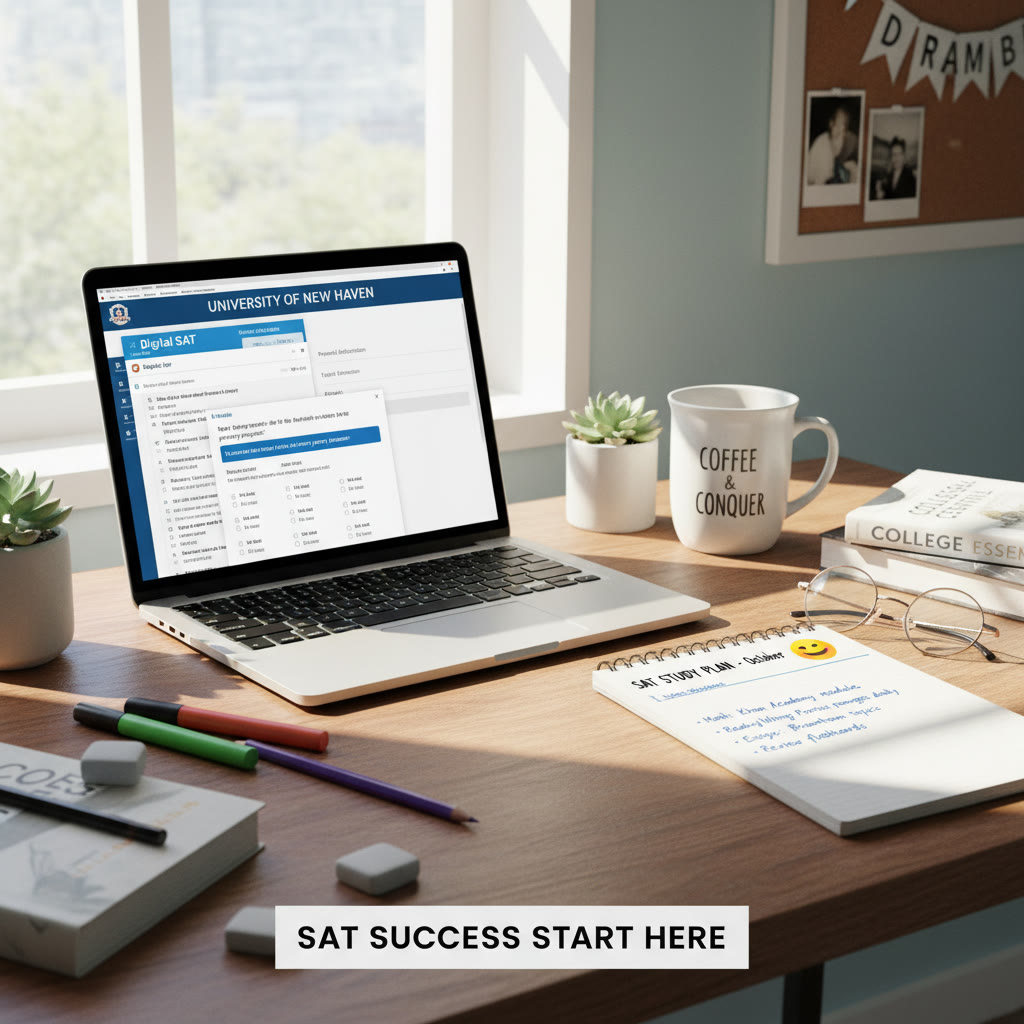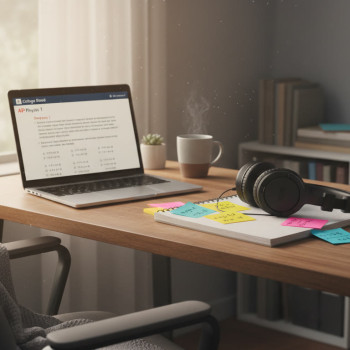Quick overview: Does UC Berkeley require the SAT?
Short answer: No — UC Berkeley does not require SAT or ACT scores for admission. For students and families this means the SAT is optional rather than mandatory, but optional does not mean irrelevant. Understanding how UC Berkeley views test scores, what the university values instead, and how to use the Digital SAT strategically can still make a measurable difference in your application.

Why UC Berkeley’s test-optional stance matters — and how applicants should think about it
When a top public research university like UC Berkeley says test scores are neither required nor recommended, they’re signaling that they emphasize a holistic review: grades, the rigor of course work, letters of recommendation (for some programs), extracurriculars, essays, and context about opportunities and challenges you’ve faced. But optionality creates options — and decisions.
Here’s how to decide whether to submit your Digital SAT scores:
- If your SAT score strengthens your application relative to your school record (for example, your score helps explain academic potential beyond your GPA), send it.
- If your scores fall below the middle 50% of admitted students or you don’t have compelling reasons to believe they’ll improve your standing, you can skip sending them.
- If you’re aiming for scholarship programs or particular majors that sometimes use test scores for placement or scholarship eligibility, double-check program-specific guidance or contact admissions.
Understanding the Digital SAT and why it’s different
The SAT has shifted into a fully digital format. The test is shorter overall, adaptive in sections, and delivered on approved devices or at test centers on College Board-supported tablets. The mechanics change the way you should practice:
- Adaptive format: the second module’s difficulty is influenced by your performance in the first — steady accuracy early matters.
- Shorter timing bursts: pacing strategies differ from the paper test; practice with full digital practice tests helps build stamina in the new cadence.
- Calculator policy and tools: the digital platform includes tools and an on-screen calculator in certain sections — know when and how to use them efficiently.
How UC Berkeley reads digital vs. paper SAT scores
From an admissions perspective, a score is a score — the format shift doesn’t downgrade the value of strong results. What matters is whether the score complements the rest of your application. Think of the Digital SAT as a modern, practical way to demonstrate readiness; if it helps tell your academic story, include it.
What a competitive SAT profile looks like for Berkeley applicants
Because Berkeley is extremely selective, applicants often wonder what a “good” SAT is. Rather than fixating on a single number, use these practical guidelines to set goals and make choices.
| Applicant Profile | Suggested Digital SAT Goal | How to Use That Score in Your Application |
|---|---|---|
| Strong GPA, AP/honors courses, strong extracurriculars | Top 25% of admitted students (aim high but realistic) | Submit if score aligns with transcript; reinforces academic fit. |
| High GPA but weaker course rigor | Above average (demonstrates readiness for rigor) | Use score to strengthen case for academic potential; highlight any upward trend in coursework. |
| Solid extracurriculars, uneven GPA due to context | Moderately competitive (shows capability despite context) | Submit with a short note in additional information explaining context and growth. |
| Low standardized test comfort or other strengths dominate | Optional — no minimum | Consider focusing energy on essays, portfolio, or other application strengths. |
Interpreting the table
Because the University of California system evaluates applications holistically, numerical score bands are only one piece of the puzzle. Use the Digital SAT to corroborate your academic narrative. If you have time and the potential to improve meaningfully, investing in a targeted study plan often pays off.
Practical timeline: When to take the Digital SAT for a Berkeley application
Timing matters. Below is a suggested timeline for juniors and seniors planning to apply to UC Berkeley. Adapt it to your schedule and whether you plan to retake the test.
- Junior year (spring): take a full-length practice digital SAT to establish a baseline.
- Summer before senior year: intensive review or a prep program if you’re aiming to improve 50+ points.
- Early fall senior year: take the Digital SAT no later than October–November so scores are available for your application timeline and for scholarship considerations.
- Late fall/winter: if needed, plan one retake (allow time for score reporting) — be mindful of application deadlines and when UC Berkeley expects materials.
Example schedule
| When | Action | Why it helps |
|---|---|---|
| April (Jr.) | Take full digital practice test | Baseline & identify weak areas |
| June–August | Targeted prep (summertime focus) | Large gains possible with consistent practice |
| October (Sr.) | First official Digital SAT | Scores returned in time for early application review |
| December (Sr.) | Optional retake | One more chance to improve; still early enough for many programs |
How to prepare effectively for the Digital SAT: strategies that work
Preparation should be efficient and tailored. Here are proven approaches that boost scores and confidence without burning out.
1. Diagnose first, then prioritize
Spend a practice test diagnosing patterns: are your errors careless, conceptual, or timing-related? Create a study plan that concentrates on the two weakest areas while keeping maintenance practice on the rest.
2. Practice on the Digital Platform
Use official digital practice tests. The experience of answering on a screen, using the built-in tools, and managing adaptive sections will reduce surprises on test day.
3. Build an adaptive mindset
The digital test rewards consistent accuracy. If you rush early and make careless mistakes, the second module will be tougher. Focus on steady pacing and accuracy in the opening sections.
4. High-leverage study methods
- Active recall and spaced repetition for grammar rules, math concepts, and vocab-like context strategies.
- Targeted problem sets—don’t do random questions; practice specific clusters (e.g., algebraic manipulation, evidence-based reading questions).
- Analyze every missed question thoroughly—rewrite your reasoning and test alternate approaches until the concept is mastered.
5. Realistic simulated practice
Full-length, timed digital tests under quiet conditions build the stamina and focus needed for test day. After each simulation, track trends and adjust the plan.
How to present optional SAT scores to UC Berkeley
If you choose to submit scores, do it strategically:
- Send only your best single test date (Score Choice lets you choose by date) unless you believe multiple dates together tell a better story.
- If your academic record is strong but nontraditional (e.g., inconsistent grading scale, transfer courses), use the additional information section of the UC application to explain — numbers plus context win.
- Consider sending a superscored combination only if it genuinely improves your profile; understand Berkeley’s current practice for score consideration at the time you apply.
What else matters to UC Berkeley — beyond test scores
Because testing is optional, other materials carry amplified weight. Here’s what admissions officers pay attention to, and how to make each piece shine.
Academic record and course rigor
UC Berkeley values a challenging curriculum. Honors, AP, IB, or other advanced courses demonstrate readiness for Berkeley’s academic environment.
Essays and personal insight questions
Your essays are the space to reveal intellectual curiosity, resilience, leadership, and fit. Compelling essays often tell a personal story with concrete details, reflection, and forward-looking plans.
Extracurricular depth
Depth beats breadth. Sustained commitment, leadership, or demonstrable impact in an activity often speaks louder than many short-lived involvements.
Contextual evidence
Admissions officers look for context: family, school resources, opportunities you had or didn’t have, and obstacles you overcame. Use the application sections that let you explain these factors succinctly and honestly.
How parents can support without taking over
Applying to Berkeley is a family process in many ways. Parents can be most helpful by creating calm structure, offering emotional support, and encouraging independence. Practical ways to help:
- Establish a quiet study routine and healthy sleep schedule.
- Help coordinate logistics, deadlines, and testing appointments — without micromanaging content.
- Encourage realistic planning: a balanced college list, buffer times for retakes, and a focus on the whole application.
How tutoring (and Sparkl’s personalized approach) can fit into your plan
Many students find targeted help accelerates progress. Sparkl’s personalized tutoring model—1-on-1 guidance, tailored study plans, expert tutors, and AI-driven insights—can be especially useful for students who want efficient improvement in specific areas rather than generic prep. A few ways tutoring helps:
- Customized study plans based on diagnostic tests so students work smarter, not harder.
- One-on-one coaching to debug thought processes on tricky questions and to teach test-taking strategies for the adaptive digital format.
- Regular progress checks and adjustments so effort leads to measurable improvement.
If your student has a narrow time window or specific weaknesses, a focused tutor can often raise scores while freeing the student to work on essays, activities, and schoolwork.
Common applicant scenarios and recommended actions
Below are typical profiles and what they could do about the SAT in the Berkeley context.
- Top grades, high rigor, strong essays: Optional — submit an SAT only if it adds to your story. Otherwise, focus on essays and recommendations.
- Good grades, moderate rigor, inconsistent test history: Consider a retake after targeted prep. If scores improve noticeably, include them.
- Average grades but exceptional achievements (research, art, entrepreneurship): A strong Digital SAT can help bridge the gap, but the application should prioritize evidence of impact and detailed project descriptions.
- Low test confidence or test anxiety: Look into alternate ways to demonstrate readiness (advanced coursework, projects, college-level testing where applicable) and weigh whether the SAT’s stress is worth potential benefit.
Checklist: Before you submit your Berkeley application
- Have you decided whether your SAT score helps your application? (Yes/No)
- Have you requested score reports with enough time for processing?
- Are your essays polished and aligned with your academic and personal narrative?
- Have you explained any contextual factors that impacted grades or opportunities?
- Do you have backup plans (multiple colleges) and a strategy for financial aid and scholarships?
Sample preparation plan (12 weeks) for a meaningful score improvement
This plan assumes about 6–10 hours per week of focused study and includes both self-study and optional tutoring sessions.
| Weeks | Focus | Weekly Activities |
|---|---|---|
| 1–2 | Diagnostic & fundamentals | Full digital practice test, error analysis, fundamentals review, 2 tutoring sessions (if using) |
| 3–6 | Skill building | Targeted drills (math concepts, evidence reading), weekly timed sections, 1 tutor session/week |
| 7–9 | Pacing & strategy | Timed full sections, adaptive practice simulations, refine guessing/skip strategies |
| 10–11 | Full practice tests | Two full digital practice tests, focused remediation on missed question types |
| 12 | Final polish | Light review, rest, logistics check (test day items, arrival plan) |
Real-world examples: how different students used the SAT in their Berkeley applications
These composite examples show realistic decision-making (names and identifying details are fictional).
- Riya (STEM hopeful): Strong GPA in AP calculus and sciences but attended a school with few AP offerings earlier. Her target Digital SAT improved her profile—she submitted a high Math-strong digital score and used essays to highlight her research project, which reinforced her academic narrative.
- Marcus (creative arts applicant): Exceptional art portfolio, average standardized scores. He chose not to submit SAT scores and instead focused on portfolio presentation and supplemental materials that showcased his work.
- Olivia (first-generation applicant): Strong upward grade trend but inconsistent test scores. She retook the Digital SAT after targeted tutoring and submitted the improved score; she also used the additional information section to describe family responsibilities that impacted earlier grades.
Final thoughts: making the SAT choice that’s right for you
UC Berkeley’s test-optional stance places the emphasis on the whole student. The Digital SAT can be a powerful tool if it strengthens your story, but it’s only one of many elements admissions reviewers consider. Prioritize authenticity, show evidence of intellectual curiosity, and present your achievements in context.
If you want a pragmatic, personalized way to improve specific weaknesses without losing time for essays or schoolwork, consider targeted guidance. Sparkl’s 1-on-1 tutoring, tailored study plans, expert tutors, and AI-driven insights are designed to help students make efficient, measurable progress — whether that means improving a Digital SAT score or freeing up time to build a stronger application in other areas.
Parting checklist for students and parents
- Decide early whether you’ll take the Digital SAT and when — align it with application deadlines.
- Take an official digital practice test to get a true baseline.
- Use targeted study and consider 1-on-1 tutoring if you need focused improvement.
- Focus equal energy on essays, course rigor, and contextual storytelling.
- Ask admissions questions early if you have program-specific concerns; verify deadlines and materials on Berkeley’s official admissions pages.

Applying to UC Berkeley is exciting and undeniably competitive, but with clarity, planning, and the right preparation strategy, you’ll have control over how you present your best self. Use the SAT when it makes sense. Build a compelling, authentic application the rest of the time. And remember — measured, personalized help (whether from a thoughtful tutor or a targeted program like Sparkl) can save time and bring out your strongest performance when it matters most.
Want help planning your next steps?
Start with a diagnostic practice test, identify the two skills that will move your score most, and build a 12-week plan that balances test prep with application work. If you’d like tutoring that adapts to your pace and goals, consider a personalized approach that combines human coaching and data-driven insights — and then focus on telling your unique story to Berkeley, clearly and confidently.


















No Comments
Leave a comment Cancel